1.Songshan Shaolin
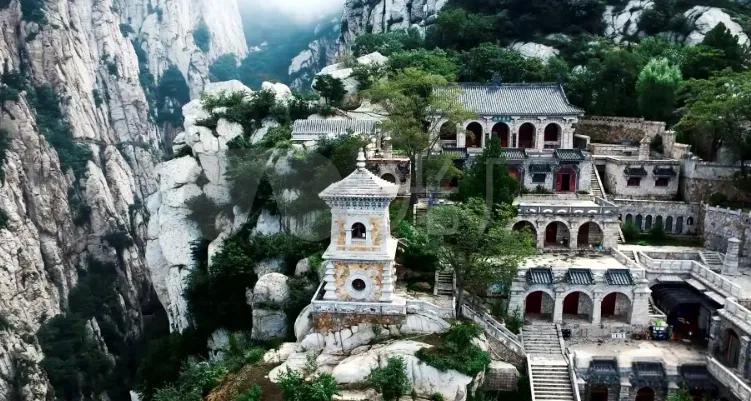
The Songshan Shaolin Scenic Area is located in Dengfeng City, Zhengzhou City, Henan Province. Throughout history, emperors, generals, literati, scholars, eminent monks, and martial arts heroes have often visited here, leaving behind numerous cultural relics and historical sites. The Songshan Historical Architecture Complex, which has been listed as a “World Cultural Heritage Site”, includes 8 historical buildings including Taishi Que, Zhongyue Temple, Shaoshi Que, Qimu Que, Songyue Temple Pagoda, Guanxing Terrace, Huishan Temple, Songyang Academy, Zhongyue Temple, Shaolin Temple Hospital, Chuzu Temple, and Tallinn. The Songshan Scenic Area has three major scenic spots under its jurisdiction, namely Shaolin Scenic Area, Songyang Scenic Area, and Zhongyue Scenic Area.
2.the Longmen Grottoes
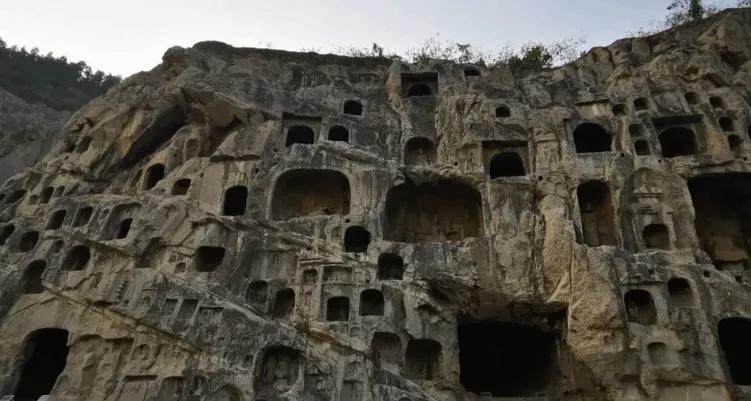
Longmen Grottoes, located in Luoyang City, Henan Province, is the world’s largest treasure trove of stone carving art with the most statues. It has been rated as the “highest peak of Chinese stone carving art” by the United Nations Educational, Scientific and Cultural Organization and ranks first among all major stone caves in China. With a long history, it has been excavated for multiple dynasties and intermittently constructed for more than 500 years. There are more than 97000 Buddha statues, of which the Xishan Grottoes are the essence, including the Lushena Buddha statue and the “Longmen 20”.
3.Luoyang Baiyun Mountain

Baiyun Mountain is located in the hinterland of Funiu Mountain, a world geological park in the southern part of Song County, Luoyang City, Henan Province. It is one of China’s top ten leisure destinations and is known as the “Wonderland on Earth”. It is a natural primitive forest, with 37 peaks above 1500 meters in altitude. Yuhuangding is the first peak in the Central Plains and the best place to watch the sea of clouds at sunrise.
4.Longtan Grand Canyon
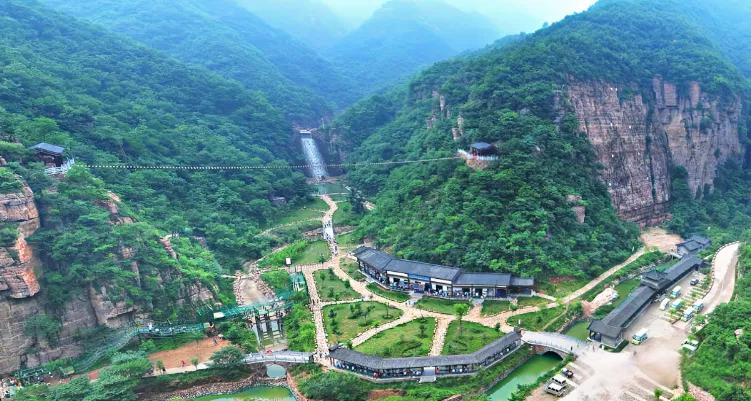
Longtan Grand Canyon Scenic Area, located in Xin’an County, Luoyang City, Henan Province, is a canyon scenic area mainly characterized by the typical geological and geomorphic landscape of the Red Rock Gorge Group. After 1.2 billion years of geological sedimentation and 2.6 million years of water flow cutting and erosion, the Gao Xia Weng Valley can be regarded as a world masterpiece.
5.laojun mountain
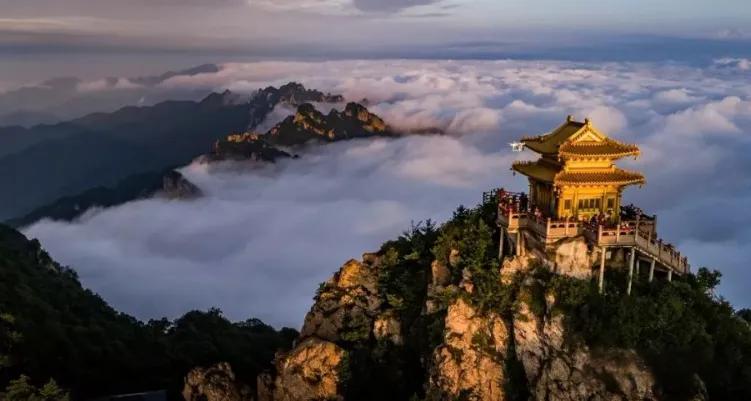
Laojun Mountain is located in Luanchuan County, Luoyang City, Henan Province. Laojun Mountain, formerly known as Jingshi Mountain, was named after Laozi, the founder of Taoism in the Eastern Zhou Dynasty, who retired and practiced here; It is the main peak of Funiu Mountain, 800 miles away, with an elevation of 2217 meters. Laojun Mountain was formed during the continental mountain building movement 1.9 billion years ago, creating a diverse and magnificent landscape with numerous peaks competing for beauty, stretching the earth and reaching the sky; Shaped the theme image of “China’s Green Heart, World Geological Wonders”. The Laojun Mountain Temple Taoist Temple has a long history and a rich Taoist culture. Since the establishment of the Laojun Temple in the Northern Wei Dynasty, it has become the center of worship for pilgrims in the Central Plains. In the 19th year of the Ming Dynasty’s Wanli reign, the Laojun Mountain Taoist Temple was granted the title of “Famous Mountain in the World”.
6.Cockscomb Cave
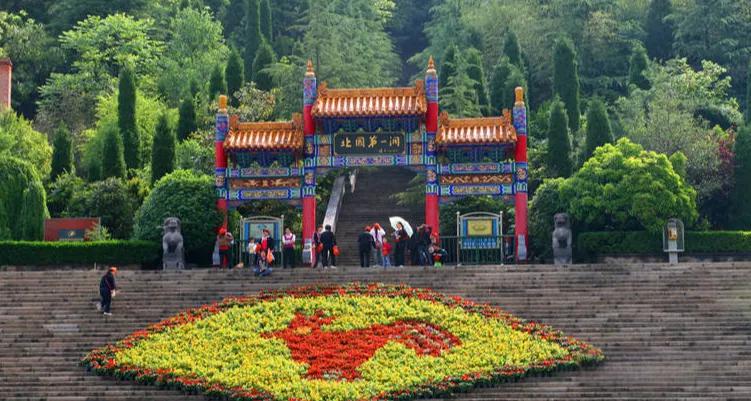
Jiguan Cave, located in Luanchuan County, Luoyang City, Henan Province, belongs to the karst landform. The Chicken Crown Cave slopes underground for more than 1000 meters and is a rare cave tourism scenic spot in northern China, known as the “natural air conditioner”. The Jiguan Cave, which was formed hundreds of millions of years ago, was discovered during the Zhenguan period of the Tang Dynasty (627-649 AD). The cave has a huge area and is divided into multiple small scenic spots with different themes, such as “Yuzhu Lake”, “Yicai Hall”, “Diewei Palace”, etc. The “First Pillar of China” in the cave is a landmark landscape of the Chicken Crown Cave, supported by two huge dragon pillars, one thick and one thin, supporting an underground palace of nearly 23000 square meters.
7.Millennium City Park

Qingming Shanghe Garden is a large-scale Song Dynasty cultural themed park located in Kaifeng City, Henan Province. It was built based on the famous Song Dynasty painting “Qingming Shanghe Tu”. Highly restored Qingming Riverside Scene, consisting of eight functional areas and four cultural areas. South Garden reproduces the various urban scenes of the Northern Song Dynasty’s Tokyo, while North Garden portrays the royal gardens and palace entertainment of the Song Dynasty, with magnificent palace landscape architecture in the garden.
8.Bali Gou
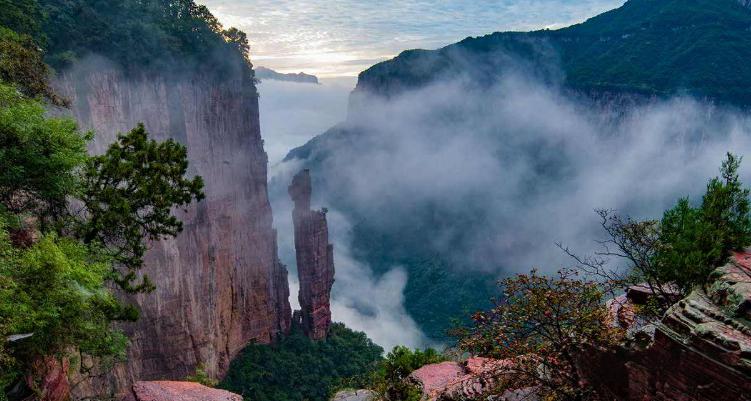
Baligou Scenic Area, located in Xinxiang City, Henan Province, is the place where the essence of Taihang Mountains and waters gather. It is also known as the “soul of the Taihang Mountains” because it has the power of Mount Taishan, the danger of Mount Hua, the seclusion of Jiuzhai and Qingcheng, and the beauty of Mount Huangshan and Emei. The characteristic of Baligou Tourist Area is that its beauty lies in its originality and its value lies in its natural beauty. The main scenic spots include Taohuadu, Shanshenmiao, Yangzhoudi, Hongshi River, etc. Among them, the Baligou Waterfall has a drop of 180 meters and is known as the “number one waterfall in North China”. The Hongshi River originates from Shanxi, with an altitude of 1500 meters, hence it is also known as the “Taihang Tianhe”.
9.Chaya Mountain
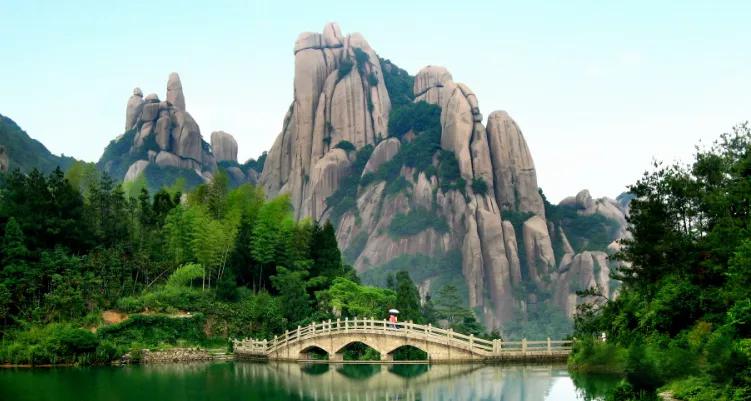
The Chaya Mountain Scenic Area is located in Suiping County, Zhumadian City, Henan Province. It is not only a treasure trove for Wu Chengen, the author of the Chinese classical novel “Journey to the West”, to retreat and write, but also one of the main outdoor locations for the “Journey to the West” crew. The Chaya Mountain Scenic Area consists of five major scenic spots: Nanshan, Beishan, Liufeng Mountain, Tianmo Lake, and Pipa Lake. Yan Zhenqing, a great calligrapher of the Tang Dynasty, personally wrote “Don’t Be the Dongtian” after visiting the mountains.
10.Mangdang Mountain

The Mangdang Mountain Tourist Scenic Area is located in Mangshan Town, Yongcheng City, Shangqiu City, Henan Province. It is surrounded by beautiful peaks, picturesque scenery, rich history, and mysterious culture. Here are the world’s largest underground tomb complex of the Western Han Dynasty King Liang, including the Han Liang Mausoleum Scenic Area, Liu Bang’s Snake Slaying Site, Dahanxiong Scenic Area, Mangdang Mountain Geopark, Chen Shengyuan Scenic Area, Fuzishan Scenic Area, Xishan Geopark, and other major attractions.
11.Yin ruins
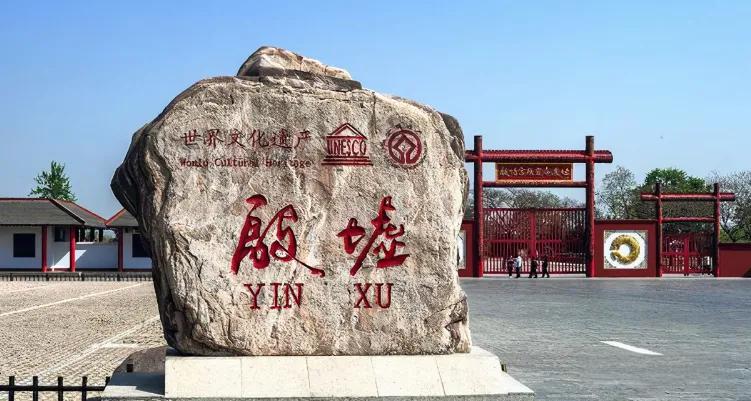
The Yin Ruins, located in Yindu District, Anyang City, Henan Province, China, is a site of the capital city of the late Shang Dynasty. It is the first confirmed capital city in Chinese history, and its discovery and excavation have been rated as the first of the “100 Major Archaeological Discoveries” in 20th century China. There are a large number of precious historical relics such as bronze, stone, bone, jade, etc. in the Yin Ruins, among which the most famous is the “Simuwu Da Fang Ding” weighing 875 kilograms, which is the largest and heaviest bronze ware discovered in the world so far.
12.Laojieling
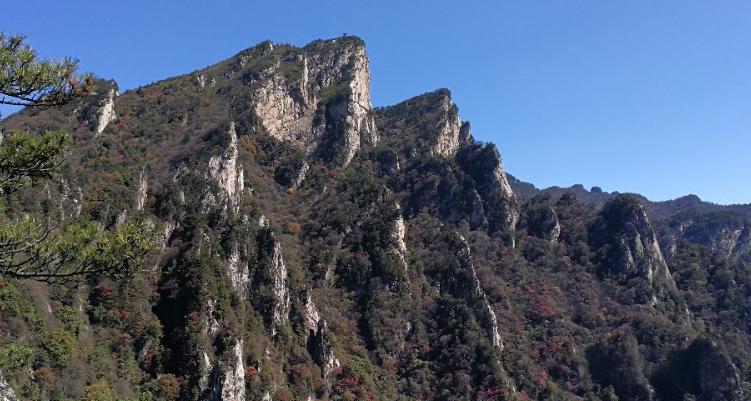
Laojieling Scenic Area is located in Xixia County, Nanyang City, Henan Province. Its main peak, Jiaojiaojian, has an elevation of 2222.5 meters and is the highest peak in the Central Plains. Laojieling is the core and essence of the Funiu Mountain Global Geopark. The three characters of Laojieling represent unique historical and geographical features. According to legend, Laozi once practiced seclusion here and was in charge of the safety of the 800 mile Funiu Mountain, which turned into stone. Jieling is the boundary between the climates of northern and southern China, and Ling is the watershed of the Yangtze River and Yellow River basins, hence it is called Laojieling.
13.Xixia Dinosaur Site Park

Xixia Dinosaur Relics Park, located in Danshui Town, Xixia County, Nanyang City, Henan Province, is an important attraction in Funiushan National Geopark. Xixia Dinosaur Relics Park belongs to the Cretaceous fault basin deposits. There are more than 1,000 dinosaur egg fossils exposed in the highest layer, and there are at least 16 egg-laying layers in the lower layer. Among them, Xixia giant elongated eggs and Gobi prismatic eggs are rare in the world and are the hallmarks of Xixia egg fossils. A large number of dinosaur egg fossils have been unearthed in Xixia, with a wide variety, wide distribution and good preservation. They are the best in the world and are known as the ninth wonder of the world after the “Terracotta Warriors and Horses of the Qin Shihuang Mausoleum”. Xixia Dinosaur Relics Park is mainly composed of four parts: Geological Science Square, Dinosaur Egg Fossil Museum, Dinosaur Egg Site and Simulated Dinosaur Park.
14.Jigong Mountain
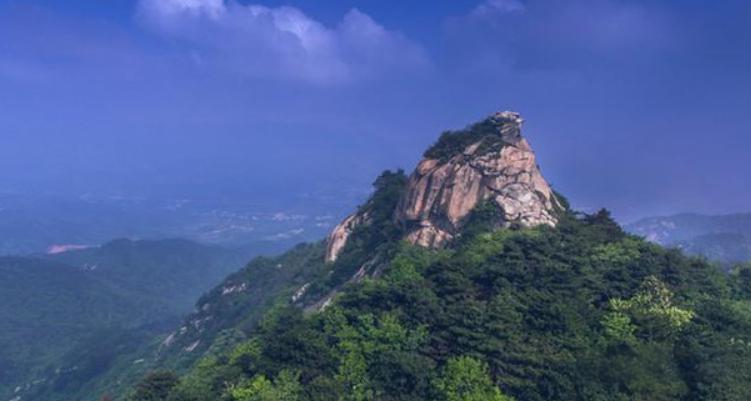
Jigong Mountain is located in Xinyang City, Henan Province. Jigong Mountain is named because it looks like a rooster with its head held high and wings spread, and its neck stretched out to crow. It is the natural dividing line between the south and the north of my country, and is known as “the blue divides Chu and Yu”. In its heyday, there were more than 300 buildings of various styles from more than 23 countries including Britain, the United States, France, Russia, and Japan, and more than 2,000 foreigners living here. Therefore, Jigong Mountain is known as the “International Architecture Museum”.
15.Yuntaishan
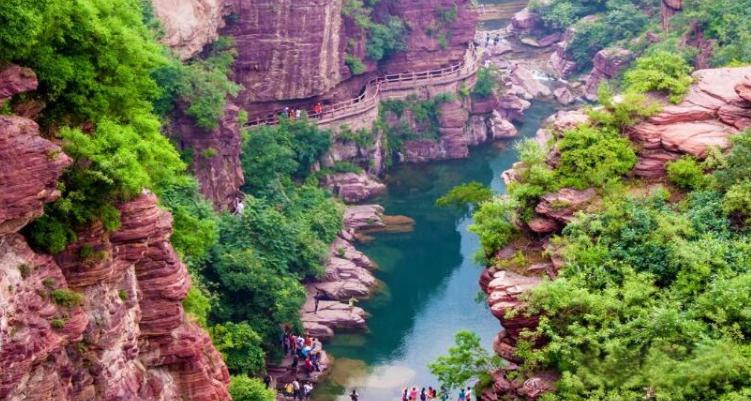
Yuntaishan Scenic Area, located in Xiuwu County, Jiaozuo City, Henan Province, was listed in the first batch of World Geoparks for its unique “Northern Karst Landform”. The scenic area covers an area of 240 square kilometers, including Quanpu Gorge, Tanpu Gorge, Hongshi Gorge, Zifang Lake, Wanshan Temple, Baijia Rock, Xianyuan, Shengding, Diecai Cave, Qinglong Gorge, Fenglin Gorge and other 11 major scenic spots.
16.Shennong Mountain

Shennong Mountain Scenic Area is located in Zhaozhai Village, Ziling Town, Qinyang City, Jiaozuo City, Henan Province. It is named Shennong Mountain because Emperor Yan Shennong distinguished grains, tasted hundreds of herbs, and set up an altar to offer sacrifices to the heavens here. Shennong Mountain is one of the first world geological parks in the world, and is also a famous mountain of Confucianism, Taoism and Buddhism. It is the place where Laozi, the founder of Taoism, built a furnace to refine elixirs and became an immortal.
17.Qingtian River
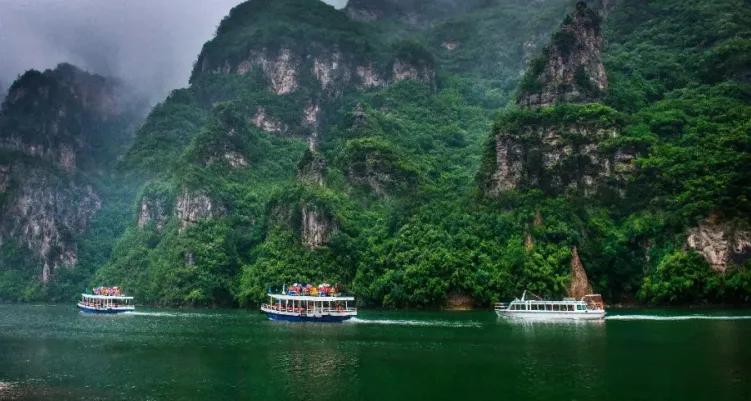
Qingtian River Scenic Area is located in Boai County, Jiaozuo City, Henan Province. The scenic area consists of seven tourist areas and 308 scenic spots, including Tianjing Pass, Daquan Lake, Sangu Spring, Guanyin Gorge, Foer Gorge, Jinjialing, and Yueshan Temple. The “mountains” of Qingtian River are compatible with both the north and the south, with both the majestic and dangerous mountains and rivers of the north and the gentle and beautiful rivers and mountains of the south; the “water” of Qingtian River comes from the sky. There is a spring every three steps and a waterfall every five steps. Green mountains surround the clear water and green trees cover the ancient temple.
18.Red Flag Canal

Hongqi Canal, located in Linzhou, Anyang City, Henan Province, is known as the artificial heavenly river, the eighth wonder of the world, and the Chinese water Great Wall. The Hongqi Canal scenic area consists of three scenic areas: “Dividing Water Garden”, “Qingnian Cave” and “Luosi Pond”. The three scenic areas have their own characteristics, different styles, and rich connotations, which complement each other.
19.Taihang Grand Canyon
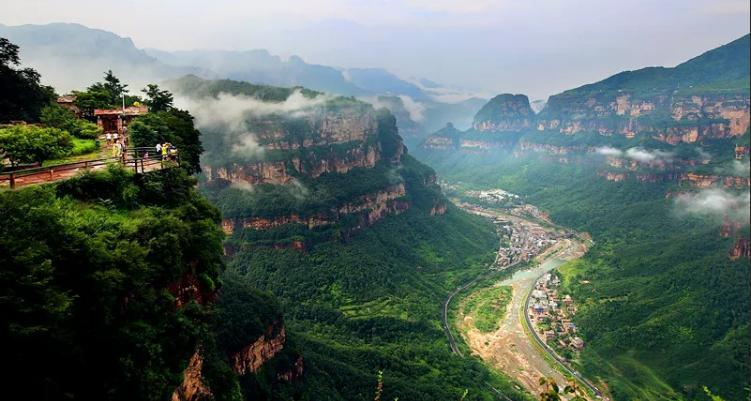
Taihang Grand Canyon Scenic Area, located in Linzhou, Anyang City, Henan Province, has typical northern landscape features. The entire scenic area is divided into three major areas: Taohua Valley, Wangxiang Rock and Taiji Iceberg. Taohua Valley has the most beautiful waterscape, with lush vegetation and streams and waterfalls everywhere. Wangxiang Rock not only has a plank road carved into the cliff, but also an 80-meter-high barrel ladder built on the cliff, which is thrilling and interesting.
20.Yaoshan
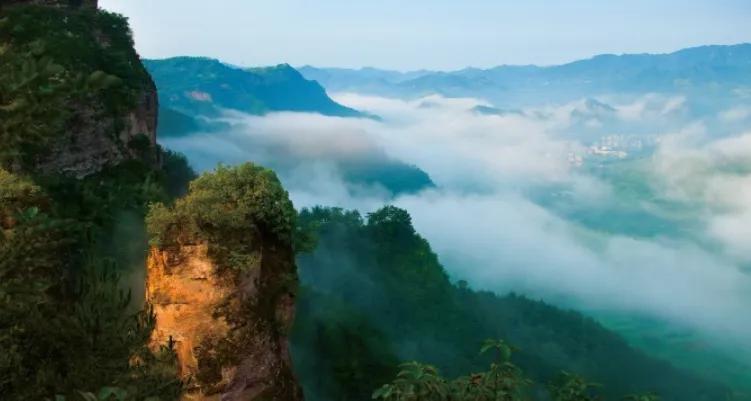
Yaoshan Scenic Area is located in Lushan County, Pingdingshan City, Henan Province, in the eastern section of Funiu Mountain. It was named after Liu Lei, the grandson of Emperor Yao, built a Yao Temple here to commemorate his ancestor. As many of the strange rocks on the mountain resemble human shapes, it is commonly known as Stone Man Mountain. It is known as “the unique beauty in the Central Plains” because it combines “majestic, dangerous, beautiful, strange and secluded” together.
21.Zhongyuan Buddha

The Zhongyuan Buddha is located in Shangtang Foquan Temple, Zhaocun Township, Lushan County, Pingdingshan City, Henan Province. It is taller than the famous Lingshan Buddha in Wuxi. The Buddha is 208 meters high. In addition to more than 3,000 tons of copper, hundreds of kilograms of gold were used to cast the entire Buddha statue. Master Hsing Yun, the president of the World Buddhist Association and the founder of Fo Guang Shan, wrote the words “Zhongyuan Buddha” for the Buddha. There is also a “Tianrui Auspicious Golden Bell” in the scenic area, which weighs more than 100 tons.
22.White Horse Temple

White Horse Temple, located in Luoyang City, Henan Province, is the first ancient temple in China and a sacred place for Buddhism in the world. The White Horse Temple was first built in the 11th year of Yongping in the Eastern Han Dynasty (68 AD). It was a temple built by the government after Buddhism was introduced into my country. It has always been revered as the “ancestral temple” and “source of Buddhism” in China. It is said that the name of the temple came from the story of “a white horse carrying scriptures”.
23.Wangwu Mountain

Wangwu Mountain, located in Jiyuan City, Henan Province, is a famous mountain in ancient China and the hometown of Yugong. The story of “Yugong Moves Mountains” takes place here. Wangwu Mountain is divided into seven major scenic areas, including Yangtai Palace, Tiantan Mountain, Tiantan Lake, and Wudou Peak. The main peak, Tiantan Mountain, is about 1,700 meters above sea level. It is the place where the ancestor of the Chinese nation, Emperor Huangdi, set up an altar to worship the sky. It is known as the “Spine of Taihang” and the “Pillar of Heaven and Earth”.
24.Western Henan Grand Canyon
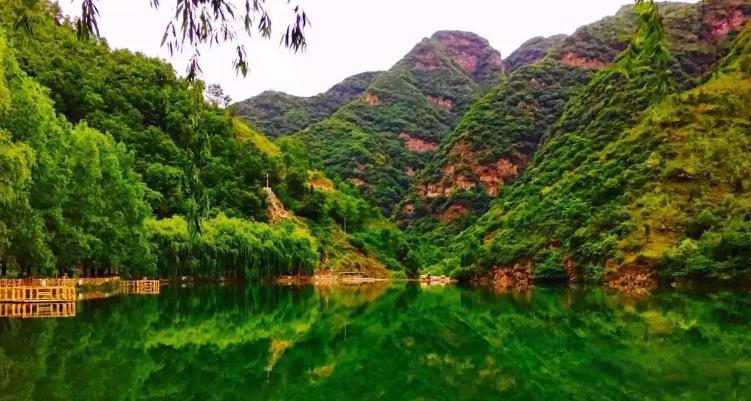
The Western Henan Grand Canyon Scenic Area is located in Sanmenxia City, Henan Province. The Western Henan Grand Canyon is oriented east-west, like a ribbon extending from west to east. The narrow and deep canyon has many rapid rivers and consists of 99 waterfalls of various sizes and more than 300 pools.
25.Kaifeng Prefecture
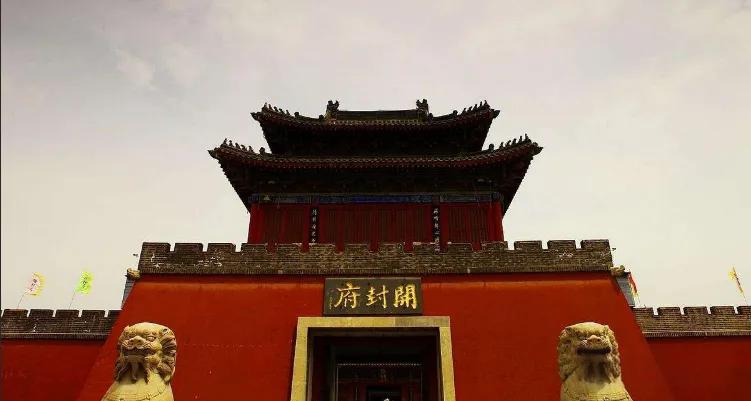
Kaifeng Prefecture, located in Kaifeng City, Henan Province, is also known as the Southern Yamen. It was the administrative and judicial office of the Northern Song Dynasty’s capital, and was known as the capital of the country. It was the largest government office in history. The magnificent buildings contrast with the waters of the Three Ponds Lake, forming a landscape of “East Palace, West Temple, Pavilions and Clear Water”.
26.Wanxian Mountain

Wanxianshan Scenic Area is located in Huixian City, Xinxiang City, Henan Province. It is a world of stone, with stone millstones, stone walls, stone tables, stone benches, and stone kangs everywhere. Rows of farmhouses built with stones are located on the cliffs, giving it a unique mountain village feel. The scenic area is full of peaks, with waterfalls and cliffs everywhere. Among them, the Guoliang Cliff Corridor is more than 1,200 meters long and was completely excavated by humans. It is praised by foreigners as the “Eighth Wonder of the World”.
27.Henan Baoquan Scenic Area

Henan Baoquan Tourist Resort, located in Huixian City, Xinxiang City, Henan Province, is a typical canyon ecological tourist area. Baoquan is backed by the Taihang Mountains, like a canyon painting of supernatural craftsmanship, with ten major waterfalls such as Shuanglong Waterfall, Jianlong Waterfall, Yunu Waterfall, and Zhenzhulian Waterfall. The water in the pool is clear and green, and it is known as the “Little Jiuzhaigou in the Central Plains”.
